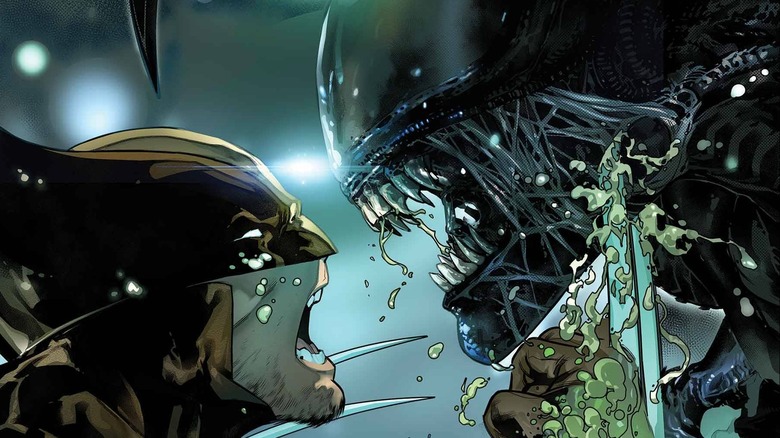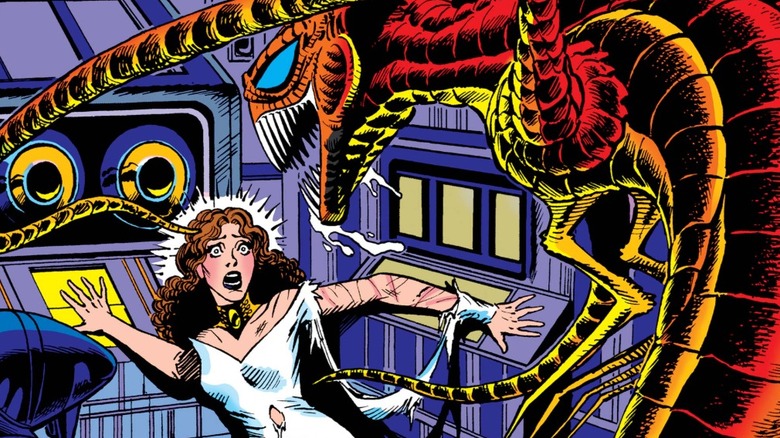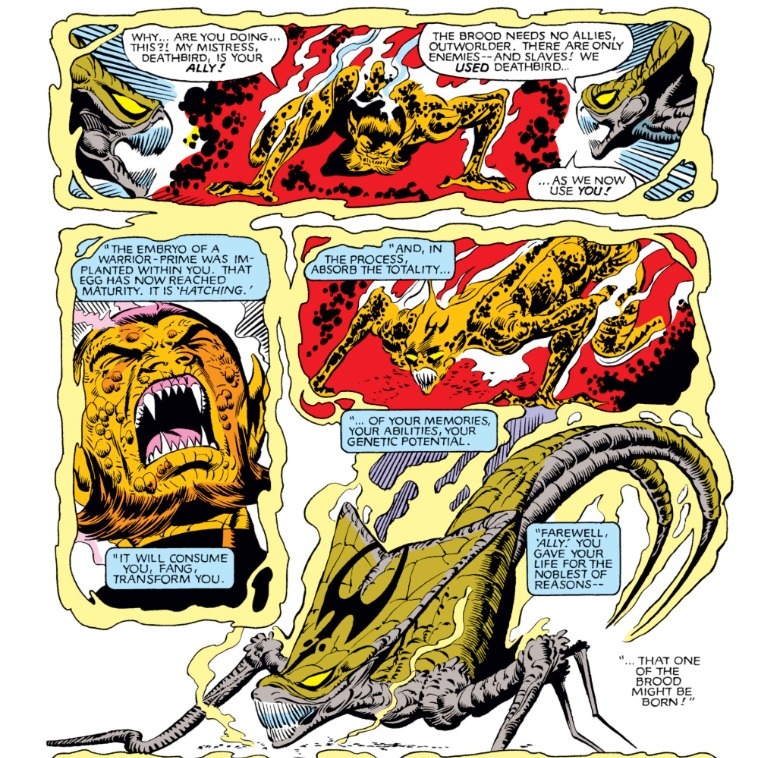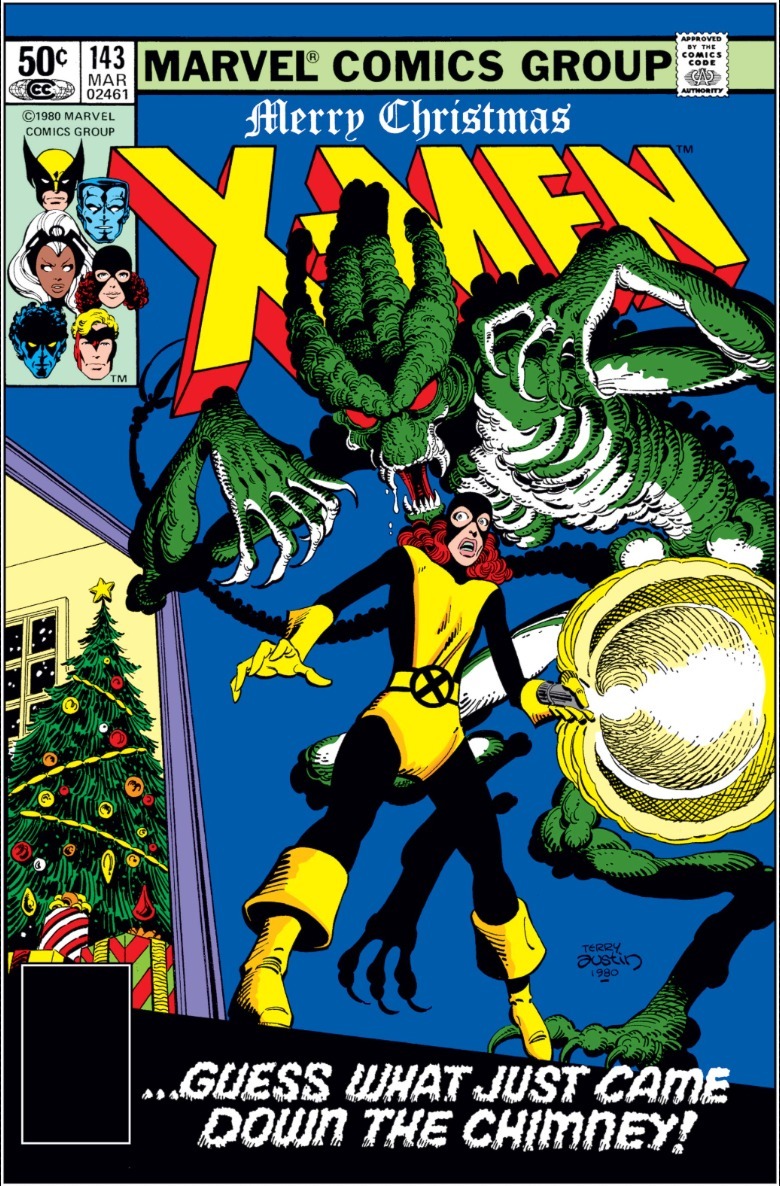These X-Men Villains Are Marvel's Own Version Of Alien's Xenomorphs
The 2024-2025 "Aliens Vs. Avengers" comic mini-series by writer Jonathan Hickman and artist Esad Ribic pitted Xenomorphs against the heroes of the Marvel Universe (and answered how a symbiote like Venom would fare against facehugging, chestbursting parasites).
But this crossover, while excellent, was also a bit redundant. The Marvel Universe already has analogues to the Xenomorphs: the alien parasites called the Brood, most known for their fights with the X-Men.
If you're only familiar with the stripped down and faux-realistic "X-Men" movies, then you'll be surprised how fantastical the comics can get. Aliens are a big part of the totemic 1975-1991 "X-Men" run by Chris Claremont, whereas it took until the 2019 "Dark Phoenix" film for the cinematic X-Men to tussle with little green men.
Early in Claremont's "X-Men," Professor X falls for Lilandra, princess of the alien species Shi'ar. The X-Men help Lilandra overthrow her imperious brother D'Ken... but it's not long before Lilandra's sister, Deathbird, is clawing for the Shi'ar throne too. The Brood first appear in "Uncanny X-Men" #155 as minions of Deathbird. Apparently taken by artist Dave Cockrum's design for them, Claremont made the Brood the villains of a multi-issue arc from "Uncanny X-Men" #161-167.
The Brood, as drawn by Cockrum, look like a cross between a Xenomorph and a wasp. They have the crested head, fangs, and stinger tail of a Xenomorph. The Brood's crest is triangular, not phallic, though, and they also have demonic ovoid eyes and insectoid wings. While Xenomorphs are little more than wild animals and behave as such, the Brood are fully sentient and capable of speech. To travel the galaxy, the Brood have enslaved the Acanti, whale-like aliens that travel through the vacuum of space at faster than light speeds.
Some later Marvel artists have leaned more and more on the Xenomorph resemblance when drawing the Brood (see Frank Cho's depiction of the Brood for "Ms. Marvel").
Xenomorphs infamously reproduce in two life cycles; a facehugger implants an embryo in a host, then the embryo matures and bursts out of its host's chest. This horrifying sequence is an influential one, inspiring other alien monsters such as the Gorn in "Star Trek: Strange New Worlds." The Brood are parasites, too, but they take more than your body.
The Brood are the X-Men's Xenomorphs
Like the Xenomorphs, the Brood reproduce by forcing their eggs inside other living beings and using them as unwilling carriers. Brood eggs don't "hatch" like the Xenomorph ones do, though. Rather, people infected with Brood eggs see their body slowly taken over and transformed into a Brood, their own consciousness subjugated by the new Brood one. It's like an organic version of the Borg from "Star Trek," though it's worth remembering the Brood predate the Borg by several years. See the process play out below, in "Uncanny X-Men" #162, where Shi'ar Imperial Guardsman Fang is turned into a Brood soldier.
In "The Brood Saga," the Brood (often called "Sleazoids" in the arc) abduct the X-Men because they want to add their mutant powers to their hive. As such, they are all implanted with eggs of future Brood queens. The Brood had the hive structure, queen and all, before James Cameron introduced a Xenomorph Queen in 1986's "Aliens."
The X-Men spend most of the story on borrowed time, waiting for the Brood eggs in their system to take them over. Wolverine, the star of issue #162, is saved by his healing factor and weighs whether he'll have to kill his friends if they turn. One hurdle for the X-Men, which you'll never see in an "Alien" film, is that they apply their code of nonviolence even to the Brood; they don't want to take any life, even the lives of parasites, if they can help it.
The differences between the Xenomorphs and Brood are clear, but the similarities are even clearer. "Alien" was released in 1979, so it would've been pretty fresh on people's minds when the Brood debuted in 1982. It's safe to say the Xenomorphs, at least the original one from "Alien," inspired the Brood because such influence shows up elsewhere in "X-Men."
In the 1982 interview book, "The X-Men Companion," artist John Byrne said drew Kitty Pryde based on what he thought a young Sigourney Weaver looked like. Weaver, of course, broke out by playing Ellen Ripley in "Alien." Byrne's farewell issue, "X-Men" #143, stars Kitty in an "Alien" homage. Left all alone in the X-Mansion around Christmas time, Kitty has to deal with a nasty home invader: an N'Garai demon, which too resembles a Xenomorph just slightly less than the Brood do.
The Brood have had limited appearances outside the "X-Men" comics; a heavily altered version, renamed the Colony and with less Xeno-like designs, appeared in the 1992 "X-Men" cartoon but that's about it. Will they show up in Marvel Studios' to-come "X-Men" movies? Or, since Disney owns both Marvel and "Alien" now, will they ditch the pretense and pit the X-Men not against the Xeno-ish Brood but the real thing?




